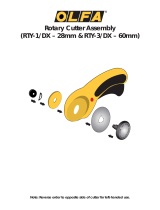
1
Contents
Cha pter 1 Description
1.1 Notice ....................................................... 3
1.2 Introduction ........................................... 4
1.3 Codes Read ........................................... 4
1.4 Installation .............................................. 4
1.5 Pin Assignment ...................................... 6
Chapter 2 Configuration - General
2.1 Flow Chart ............................................. 8
2.2 Loop of Programming ........................... 9
2.3 Factory Default Settings ........................ 9
2.4 Main Page of Configuration ................... 10
Chapter 3 Interface and Reading Mode
Selection
3.1 Interfa ce Selection ................................. 11
3.2 Memory Function .................................... 11
3.3 Reading Mode Selection ........................ 12
Chapter 4 Communication Parameters
4.1 RS232 Mode Para meters ...................... 13
4.2 Keyboard Wedge Mode Parameters..... 15
4.3 Output Characters Para meters ............. 17
4.4 Wand Emulation Mode Parameters...... 19
4.5 OCIA Mode Parameters ........................ 20
Cha pter 5 Bar Codes & Others
5.1 Symbologies Selection ......................... 21
5.2 UPC/EAN/JAN Parameters ................... 24
5.3 Code 39 Para meters ............................. 26
5.4 Code 128 Para meters ........................... 28
5.5 Interleave 25 Para meters ...................... 30
5.6 Industrial 25 Parameters ....................... 32
5.7 Matrix 25 Parameters ............................ 34
5.8 CODABAR/NW7 Parameters ............... 36
5.9 Code 93 Para meters ............................. 38
5.10 Code 1 1 Parameters ............................. 40
5.11 MSI/PLESSEY Code Parameters ......... 42






















